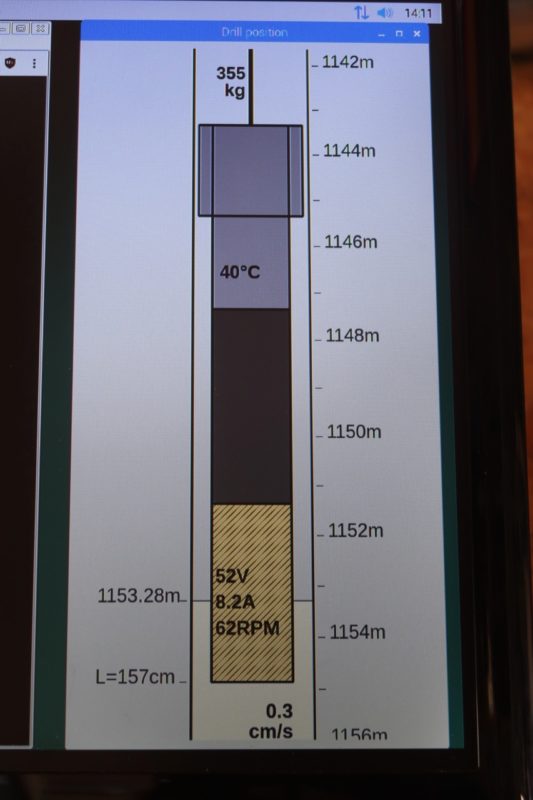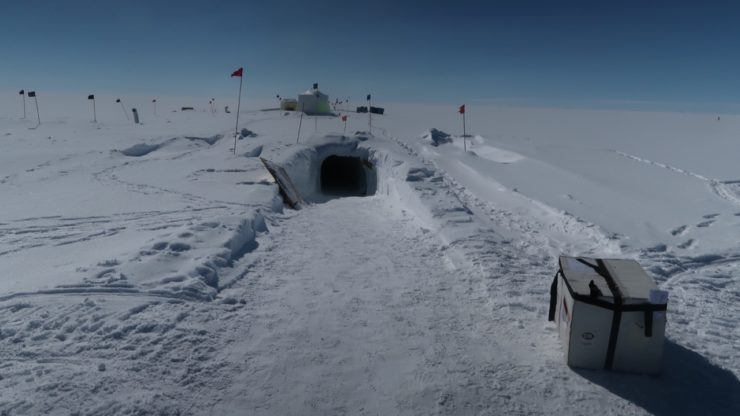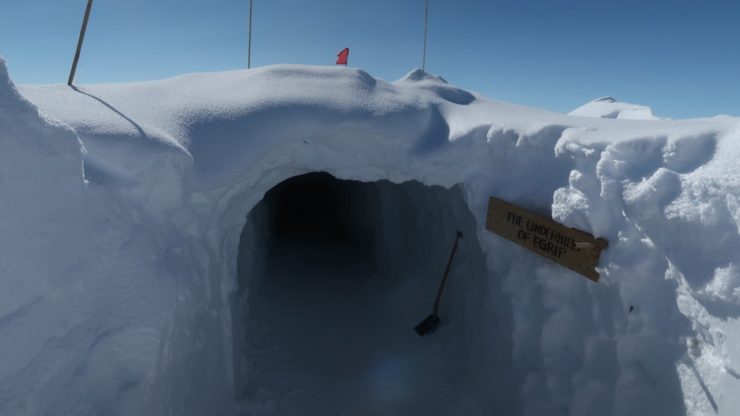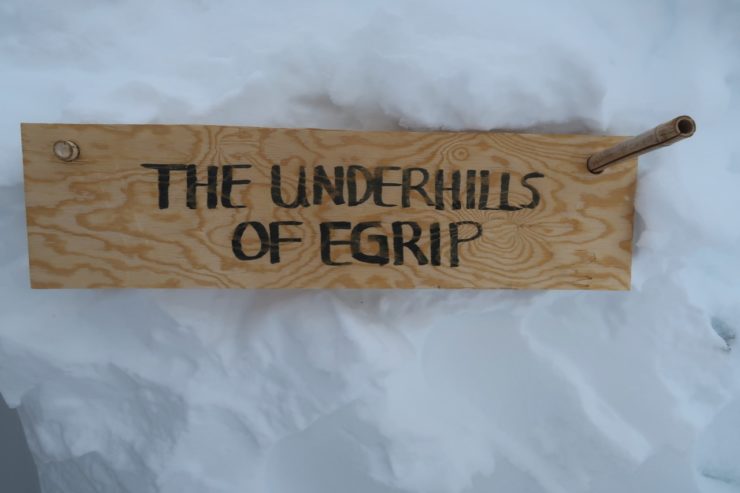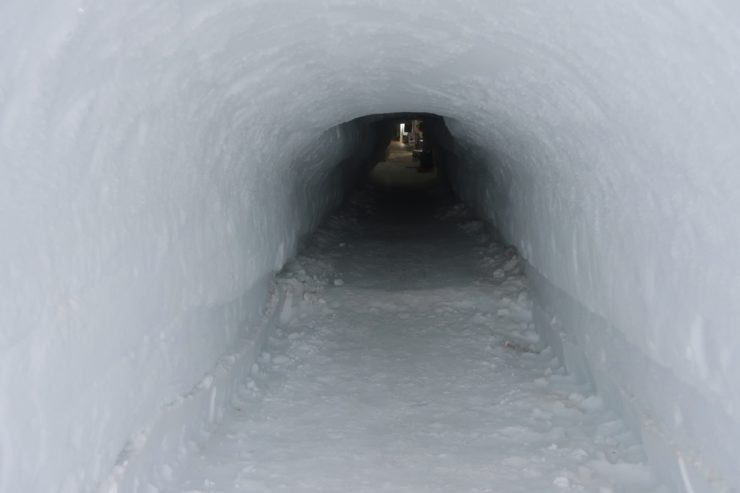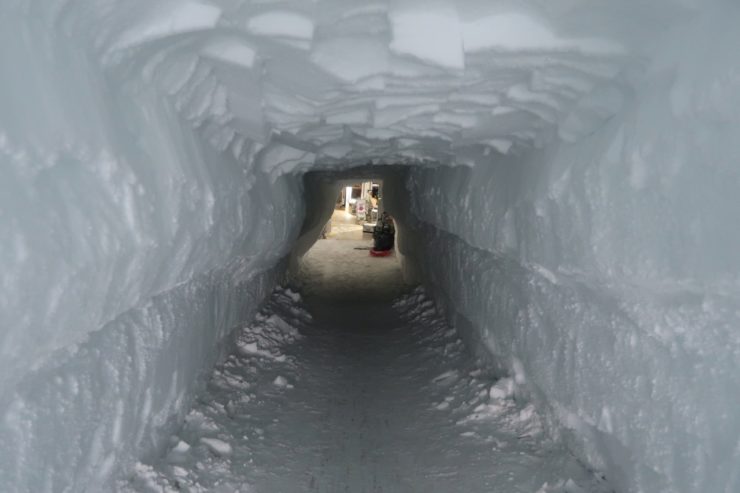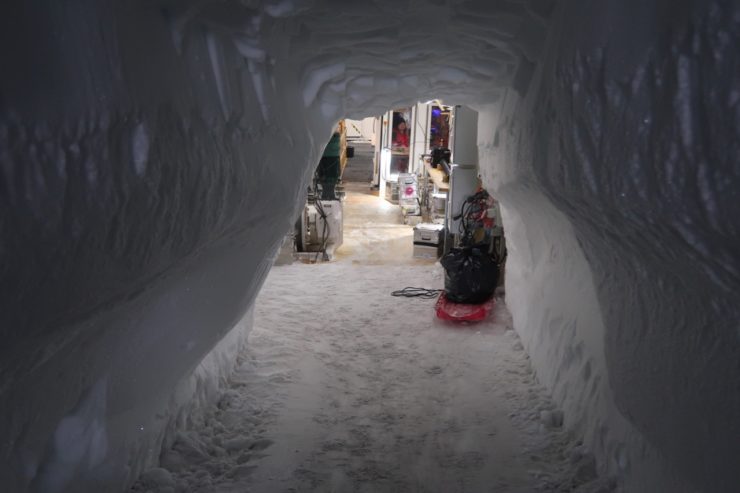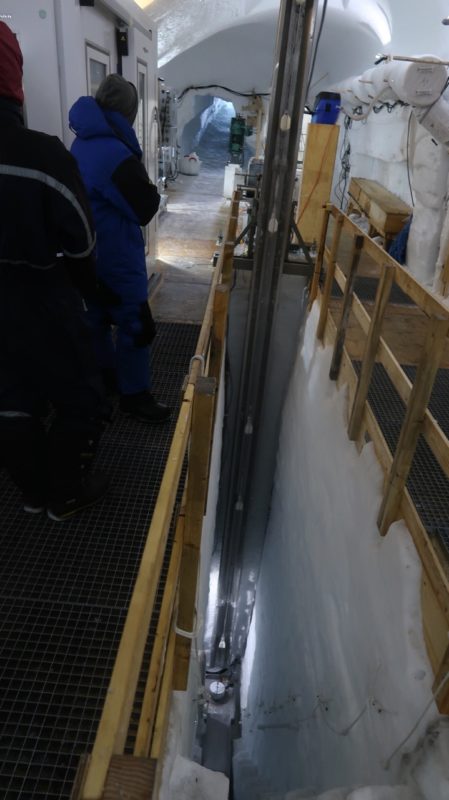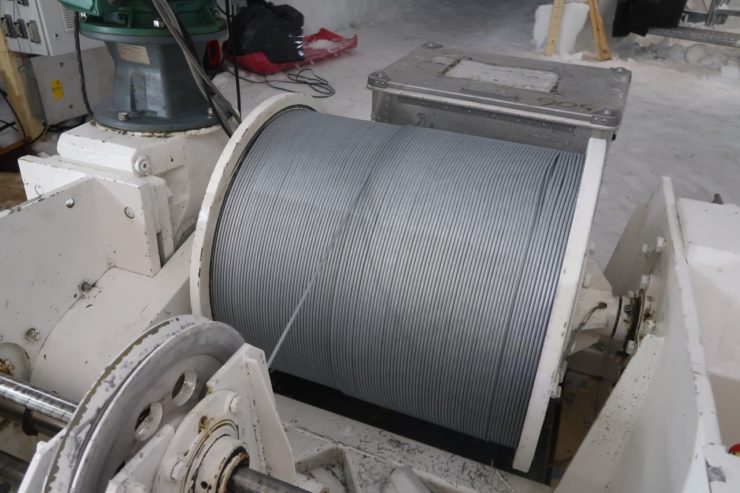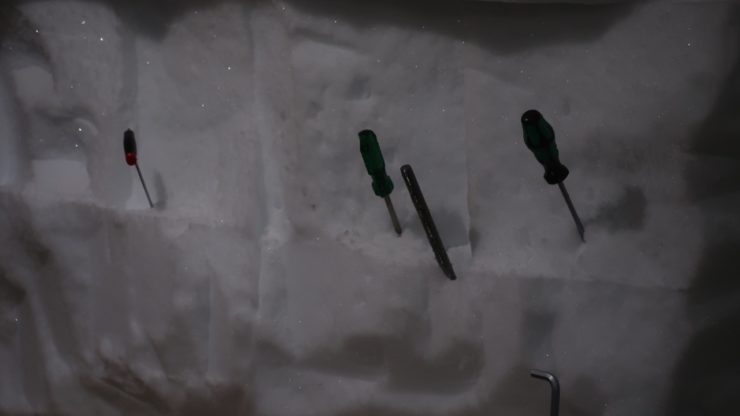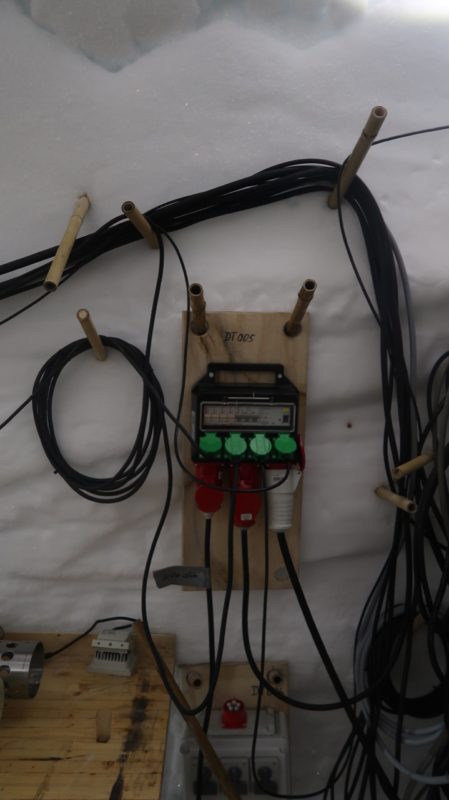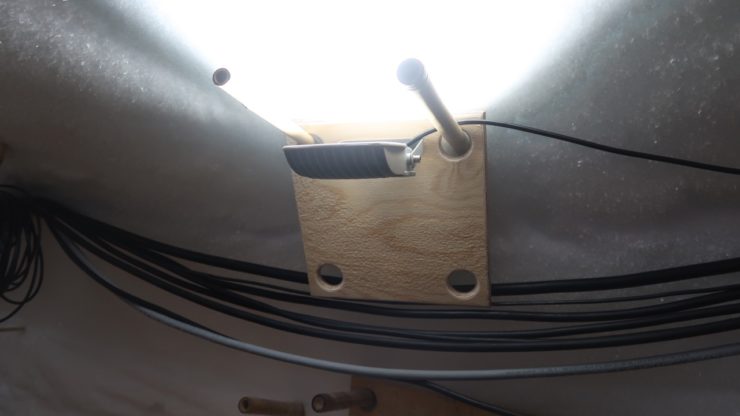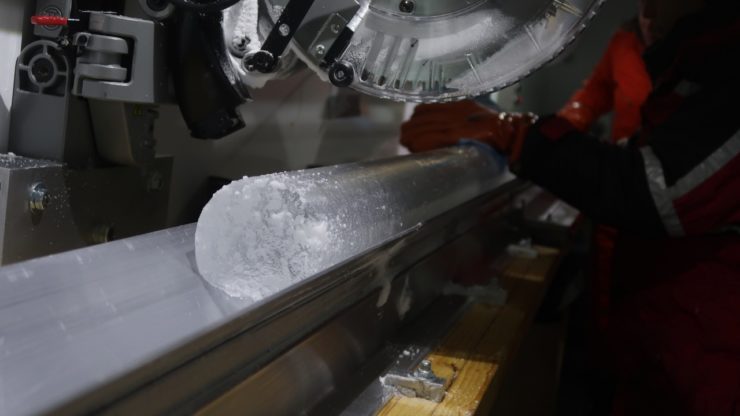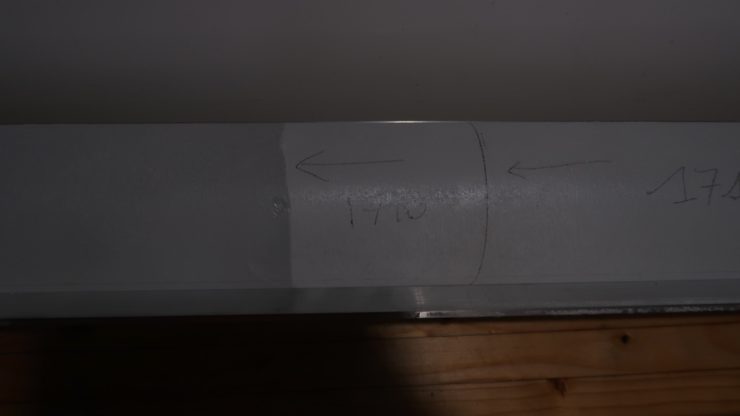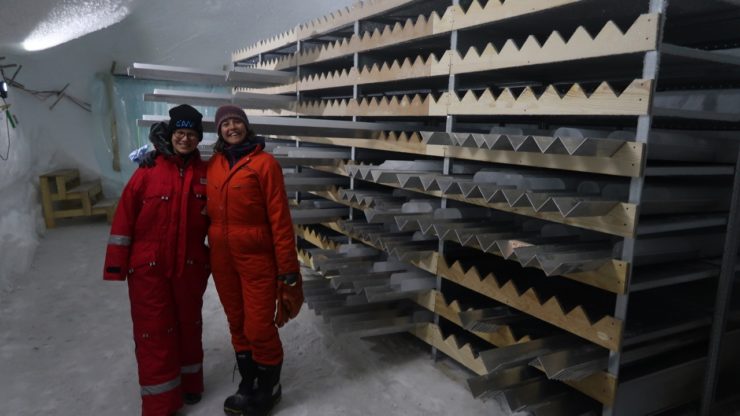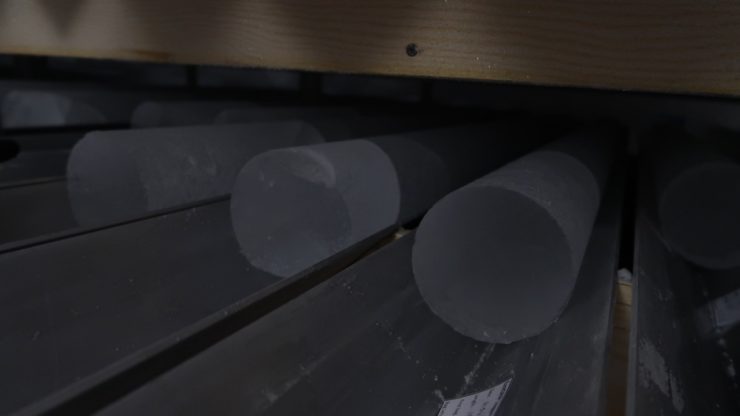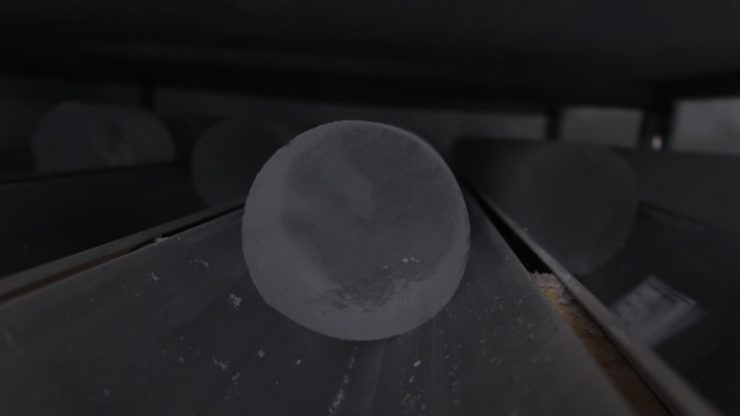Blog
The deep ice core drilling project at EGRIP
As I wrote before, the main goal of EGRIP is to drill an ice core that is about 2550 m long. We can see in real time on a screen in the main Dome how far the drillers are. At this moment (I have just taken the photo) they have reached 1153.28 m and are drilling with a speed of 3 mm per second. The total drilling phase of such an ice core takes 3 or 4 years. To understand why it is good to have a look into the drill trench.
The deep ice core drilling operation occurs in a drill trench that has been dug below the surface. You enter it through a long sloping tunnel, and you get already quite excited when you walk down into the ice sheet through this tunnel into “The Underhills Of EGRIP”.
You walk further and further….
and then you enter the main drill trench
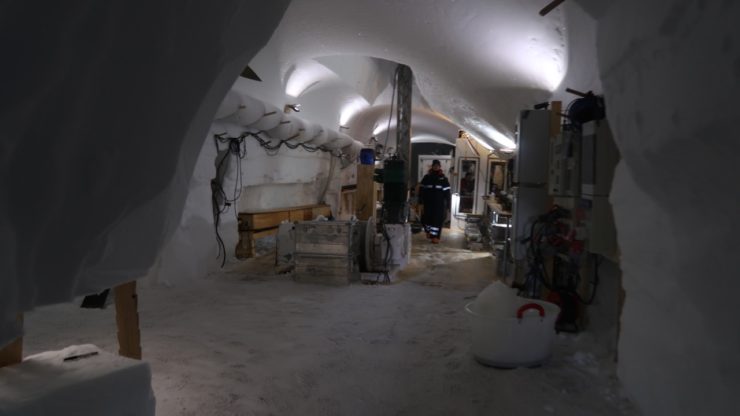 The vertical metal pole that you see is the structure that holds the drill, but the deep drill is way longer than the shallow drill that we use, and from the drill trench, there is a giant snow pit again that goes more than 10 m down where the drill actually enters the drill hole. And next to it you see the long cable on which the drill is lowered into the ice.
The vertical metal pole that you see is the structure that holds the drill, but the deep drill is way longer than the shallow drill that we use, and from the drill trench, there is a giant snow pit again that goes more than 10 m down where the drill actually enters the drill hole. And next to it you see the long cable on which the drill is lowered into the ice.
Since the walls are made of firn, all necessary equipment is stuck into the firn, or fixed with bamboo sticks into the firn – quite handy…
Last time when I came there the drill was just arriving at the surface from about 1100 down, and Nicolas and Matthias were taking out a nice piece of ice core. I will try to upload short movies now to give you an impression how this works (the movies are shown horizontally but they should be vertical, I am not sure how to do this, sorry)
When the drill head is out of the hole, the entire drill is turned by 90º so that it is horizontal. The drill head is then be removed and attached to a hole to be pushed out of the head into the loggers room, where Emilie and Nikol are already expecting the core.
Here it comes – a beautiful clean ice core of about 3.5 length that is more than 10000 years old. You see air bubbles inside that will be analyzed later in many laboratories (also my own). The logging team cleans the core and measures it precisely so that the ice core can later be perfectly reconstructed.
Then the pieces of ice are moved in to a temporary storage. Here they will be picked up later by the processing team.
How that goes, and what the different teams are measuring already here at EGRIP in another underground laboratory I will write in another post probably tomorrow.
Now you have gotten an impression what it takes to drill up one piece of ice from more than 1000 m depth. At the moment the drill is on its way down again, it takes about 20-25 minutes to arrive there at a speed of roughly 1 m / second. When the drill has reached the bottom, the next piece of ice will be drilled, which can take an hour. Then it has to be brought up again for 20 minutes and the next piece of ice is recovered. Now you hopefully understand why it takes so long to drill a deep ice core: 20 m per day are a good performance, and we are only at half the final depth….


